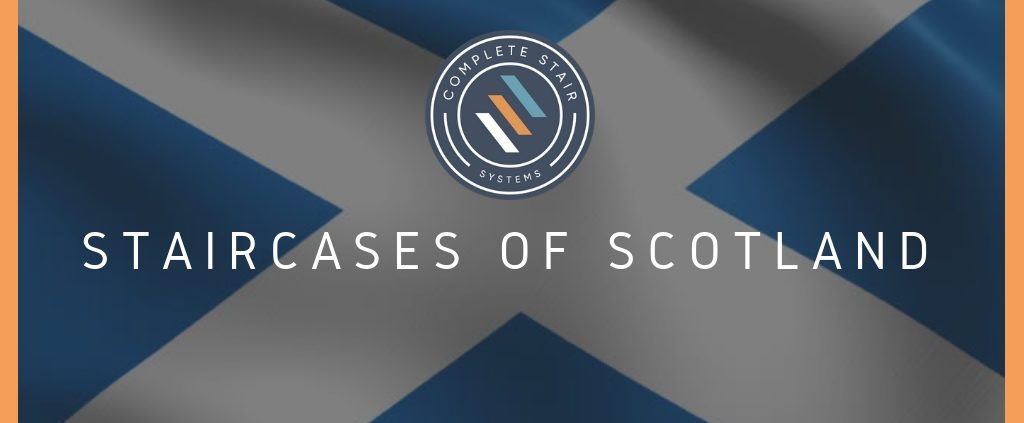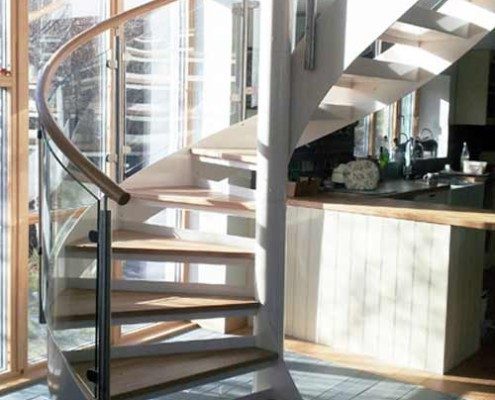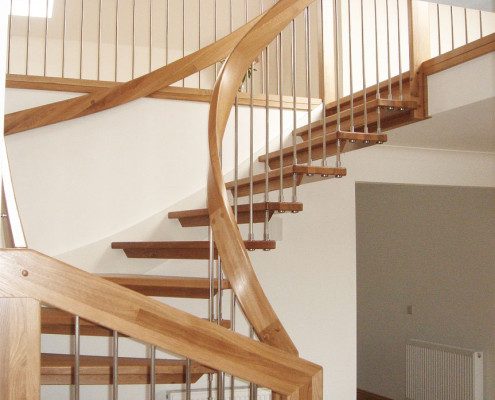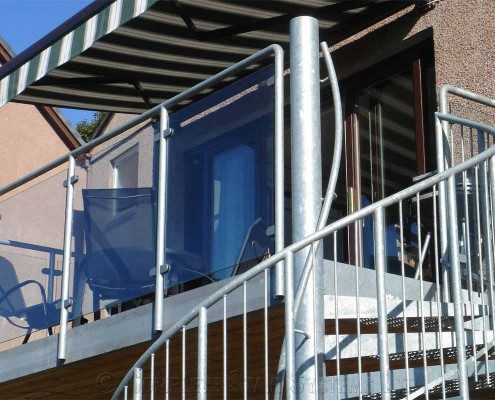Staircases Scotland
We may be based in the south of England, but we supply staircases all across the UK and beyond with many of them going to Scotland.
In recognition of this, we’ve put together a little “Staircases of Scotland” post featuring our favourite Scotland-based projects, whilst also discussing the hot topic on everyones lips; Scottish Building Regulations.
In our list you’ll see that it features various types of stairs we provide, from modern spiral staircases to modern floating timber stairs with an external spiral staircase thrown in for good measure.
Staircase: Ullapool, Scotland
This project was for a couple renovating a property within the Scottish Highlands. It’s actually a combination of a straight flight staircase and a spiral stair.
You can read more about this staircase project here.
If you want to see our other spiral staircase projects like this one, click here.
Staircase: Dumfries, Scotland
This floating timber stair was provided for a loft conversion project, and is made using solid oak. A white wall stringer serves to futher emphasize the floating effect this WF staircase is known for.
You can see more of this staircase project here.
If you want to see our other WF floating timber staircase projects, click here.
Staircase: Banchory, Scotland
This external spiral staircase is made with fully galvanised steel and features non-slip perforated treads and steel spindles. At the top is a large platform with glass balustrade.
You can see more of this staircase project here.
If you want to see our other external spiral stair projects, click here.
Scottish Building Regulations
In 2003 the Scottish government passed The Building (Scotland) Act which set out new building standards across the nation. These new standards came into force in May 2005 in the form of the Technical Handbook. This handbook has been updated several times since.
Focusing on domestic applications – what are the key differences concerning staircases compared with the rest of the UK? Section 4.3 (safety) of the technical handbook presents the guidelines for domestic stairs in Scotland. Like the regulations across the UK, the guidelines for stairs are to ensure users have a safe a convenient passage with minimal risks.
The main differences effect the geometry of stair. The maximum pitch is still 42 degree but the minimum going (tread depth) required is 225mm in Scotland opposed to the 220mm minimum elsewhere. The Scottish building regulations also stipulate a clear width of stair for domestic use which is completely omitted from the part K regulations used in the rest of the UK. A main stair in Scotland should have a clear tread width of 900mm and a secondary stair accessing one room 600mm. The 900mm main stair clear width can be reduced to 800mm if handrails are used both sides.
The rules and regulations for spiral staircases are still laid out by the British Standard 5395 although the Scottish regulations still require the 900mm clear tread width for a main stair as opposed to the 800mm mentioned in the BS.
Overall, staircases in Scotland are likely to be larger in width and length and take up more space than those elsewhere in the UK. The technical handbook also recommends that consideration needs to be given about a future stair lift installation.
Generally, there are not too many differences between the Scottish building regulations and those elsewhere in the UK – both are designed with user confidence and safety in mind. Being more recently written, the Scottish building regulations seem much clearer and more precise and go into a little more depth when describing each element of a stair.
Of course, we are well versed in building regulations across the UK and our stairs are designed to meet the standards when required.
You can see the full regulations here.
Feeling Inspired?
If you’ve seen a staircase here that you like the look of, or have something else in mind, get in contact with us now by calling us on 01794 522 444 or emailing us at info@completestairsystems.co.uk.
Alternatively, you can use the enquiry form.







